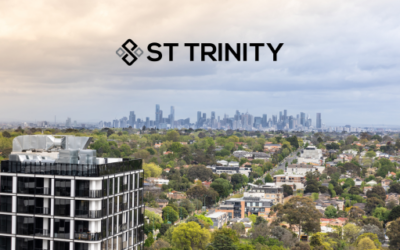The urban landscape is evolving. As cities grow denser, innovative housing solutions become a necessity, and this is where dual occupancy homes as the perfect solution. These unique properties, featuring two separate dwellings on a single block, are becoming a popular innovative choice as city dwellings. For property investors, they offer an enticing opportunity.
In this article, we delve into dual occupancy homes, exploring their potential as a strategic investment and their role in shaping the future of urban living.

Table of Contents
Understanding The Dual Occupancy Homes
Dual occupancy homes are a unique type of property that refers to the subdivision of a single block of land into two separate dwellings. Each dwelling is self-contained, with its own kitchen, bathroom, and living areas. The dwellings can be attached or detached, and they can be single- or double-storied.
The key feature in dual occupancy homes is that each dwelling has its own separate entrance and living facilities. This allows for two independent households to coexist on the same property.
The Rise of Dual Occupancy in Urban Areas or Suburbs
Dual occupancy homes have the capacity to accommodate two households on a single block, which means that these type of dwellings maximise land usage and generate more income for renters. As per The Hunters Hill Trust, dual occupancy homes are becoming increasingly popular across Australia, and recent changes in regulations are set to further boost this trend. Notably, dual occupancy can now be developed on land as small as 450sqm, down from the previous requirement of 700sqm in the LEP, with building heights reaching up to 9.5m.
Additionally, proposed reductions in landscaping requirements for varying lot sizes—down to as little as 15%-30% from the current 50%-60%—may have significant impacts on our streetscape, tree canopy, and green environment.
These regulatory changes reflect the growing demand for dual occupancy homes and indicate that more people are opting for these innovative housing solutions over traditional single properties. The ability to maximize land use, generate higher rental yields, and contribute to urban density are compelling reasons for this shift. As cities continue to evolve and adapt to the pressures of urbanization, dual occupancy homes offer a practical and attractive option for modern urban living.
Investment Appeal of Dual Occupancy Homes
Dual occupancy homes offer a unique investment opportunity. They provide the potential for higher rental yields, as two rental incomes can be generated from a single property.
Additionally, dual occupancy homes can offer a higher resale value. This is due to the increased demand for flexible living arrangements in urban areas.
Dual occupancy homes can also provide a solution for investors who are looking for ways to diversify their property portfolio. The potential for capital growth in dual occupancy properties is significant, particularly in high-demand urban areas.
As an investor can rent a dual occupancy home to two different people, he can easily earn much more from his dual occupancy properties than a single-family home in terms of annual appreciation rates.

Why Property Investors are Turning to Dual Occupancy
There are several reasons why property investors are increasingly interested in dual occupancy homes.
Firstly, the potential for higher rental yields is quite appealing.
Secondly, the ability to generate two rental incomes from a single property can significantly improve cash flow.
Thirdly, the increased demand for flexible living arrangements in urban areas means that dual occupancy homes are likely to see strong capital growth.
Finally, dual occupancy homes offer a unique way for investors to diversify their property portfolio.
Dual Occupancy Homes in Sydney’s Market
In Sydney’s property market, dual occupancy homes are in high demand. The city’s growing population and limited land availability make dual occupancy homes an attractive option for any investors or property buyers.
As a result, dual occupancy homes in Sydney often command a premium price, making them a potentially lucrative investment.
Recent data from Sydney’s real estate market shows that change in dwelling values to end of May 2024 for the last 12 months is 7.4% which clearly indicates the high demand of properties like dual occupancy homes will be increasing rapidly in the next few months and years as well. (Source: Property Price Forecast 2024).
Design and Planning for Dual Occupancy
Designing a dual occupancy home requires a strategic approach. The goal is to maximise space while ensuring privacy for each occupant. Innovative dual occupancy design solutions can help achieve this balance.
For instance, separate entrances and soundproof walls can enhance privacy. Meanwhile, open-plan living areas and clever storage solutions can maximise space.
Incorporating sustainable design elements, such as solar panels and rainwater harvesting systems, can also add value and appeal to environmentally conscious tenants.
Innovative Dual Occupancy Home Designs
Dual occupancy designs have evolved over the years. Today, they incorporate modern aesthetics with functional elements. For instance, many designs now feature open-plan living areas, high ceilings, and large windows to create a sense of space.
Smart home technology, such as automated lighting and climate control systems, is also becoming a common feature in dual occupancy homes to increase convenience and enhance energy efficiency.

Crafting the Perfect Dual Occupancy Home Plan
Creating the perfect dual occupancy home plan involves careful consideration. It’s important to consider the needs of potential occupants. For instance, a home designed for a family may require different features than one designed for young professionals.
Flexible floor plans that can be easily adapted to different household compositions are particularly valuable as they offer long-term versatility and appeal.
Legal and Regulatory Considerations
Investing in dual occupancy homes involves navigating complex legal and regulatory landscapes. Understanding zoning regulations is crucial as these regulations dictate where dual occupancy homes can be built.
Additionally, compliance with building codes and standards is non-negotiable. These codes ensure the safety and quality of the homes.
If you are investing in these relatively new type of dwellings, try to stay informed about local policy changes and emerging regulations as they can help you to avoid potential legal issues.
Zoning and Compliance for Dual Occupancy Developments
Zoning regulations vary by location. They determine the type of housing that can be built in a particular area. For dual occupancy homes, there are specific designated zones apart from which you cannot legally build a dual occupancy home.
On top of this, compliance with building codes is also essential. These codes refer to vital safety standards such as structural safety, fire safety, and energy efficiency as they pertain to the community now and in the future.
Recent updates in building codes emphasise sustainability, requiring new dual occupancy homes to meet higher energy efficiency standards.
Navigating Council Requirements and Approvals
Getting council approval for dual occupancy developments can be a complex process. It involves submitting detailed plans and reports for review.
Understanding the specific requirements of your local council is key to a smooth approval process.
Engaging with local planning authorities early in the process and seeking professional advice can significantly streamline approvals and reduce delays.

Financial and Market Insights
Dual occupancy homes offer attractive financial benefits. Under certain circumstances, they can provide higher rental yields compared to traditional single-family homes. Moreover, they have the potential for significant capital growth. However, understanding the market dynamics is crucial for maximising these benefits. Investors need to consider factors like location, demand, and economic trends.
Recent market reports from API magazine highlight that dual occupancy homes in high-growth urban areas can yield up to 20% higher rental returns than single-family homes.
Rental Yields and Capital Growth Potential
Dual occupancy homes can generate two rental incomes. This can lead to higher rental yields. Moreover, these properties often appreciate in value over time, offering potential for capital growth.
Several research on Australian property market have shown that dual occupancy properties in major cities have seen significant rental yields increase over the past five years, making them a compelling investment choice.
Tax Implications and Financing Options
Investing in dual occupancy homes also has tax implications. For instance, investors can claim depreciation on new construction.
Understanding tax benefits for your investment can enhance your profitability.
The good news is financing options for dual occupancy homes are diverse. They range from traditional mortgages to construction loans. Recent changes in tax laws provide additional incentives for investing in energy-efficient dual occupancy homes, offering further financial benefits.
Choosing the right financing option depends on your financial situation and investment goals. You can reach out to Liviti’s experts to get financing guidance on dual occupancy homes.
The Future of Dual Occupancy Homes
The future of urban living is pointing towards dual occupancy homes. These properties are well-suited to the demands of modern urban lifestyles. They offer flexible living arrangements and can cater to a diverse range of tenants. Moreover, they contribute to urban renewal and revitalisation.
As cities continue to grow and evolve, the demand for dual occupancy homes is likely to increase.
Urban Living and the Demand for Dual Occupancy
Urban living is characterised by space constraints and high property prices. Dual occupancy homes offer a solution to these challenges. They make efficient use of land and can provide affordable housing options. Government incentives and support for medium-density housing developments are further driving the popularity of dual occupancy homes.
Adapting to a Changing Demographic Landscape
The demographic landscape is also changing. More people are living alone or in small households. Dual occupancy homes can cater to these changing needs, making them a future-proof investment. As remote work becomes more prevalent, dual occupancy homes with dedicated office spaces and flexible layouts are increasingly in demand, catering to the needs of modern professionals.
Conclusion: Dual Occupancy Homes as a Strategic Investment
Dual occupancy homes represent a strategic investment opportunity. They offer potential for high rental yields and capital growth. Investors who understand the market and navigate the complexities can reap significant rewards.
With the ongoing trends of urbanisation, changing demographics, and the need for sustainable living solutions, dual occupancy homes are set to play a pivotal role in the future of modern urban living.
By strategically investing in dual occupancy homes, property investors can capitalise on a growing market, diversify their portfolios, and contribute to the creation of vibrant, sustainable urban communities.
Read More: Build Wealth With The Ultimate Dual Occupancy Homes Guide In 2024
Frequently Asked Questions (FAQs)
1. What is a dual occupancy home?
Dual occupancy homes consist of two separate dwellings on a single block of land, each with its own entrance and living facilities, allowing two independent households to coexist on the same property.
2. What is a dual key home?
A dual key home is a single building with two separate living areas. Dual key homes share a common main entrance but each with its own separate lockable door, kitchen, and bathroom. These dwellings are ideal for extended families or rental opportunities.
3. How much to build a dual occupancy home?
The cost to build a dual occupancy home varies significantly depending on location, design, and materials, typically ranging from AUD 500,000 to AUD 1 million in urban areas of Australia (Source: Real Estate).
4. What are dual occupancy homes?
Dual occupancy homes are properties featuring two independent dwellings on a single land parcel, providing separate living facilities and entrances, often used for rental income or multi-generational living.
5. Is a dual occupancy home a good investment?
Yes, dual occupancy homes are a good investment due to their potential for higher rental yields, dual income streams, and significant capital growth, particularly in high-demand urban areas (Source: Property Update).
6. Are dual occupancy homes allowed in R2 zoning?
Yes, dual occupancy homes are typically allowed in R2 zoning, which is designated for low-density residential areas, but specific regulations may vary by local council.
7. Are dual occupancy homes allowed in R2 zoning Waverley?
In Waverley, NSW, dual occupancy homes may be permitted in R2 zones, but it is essential to check specific local council regulations and obtain necessary approvals (Source: Waverley Council).
8. Are granny flats considered to be dual occupancy homes?
No, a granny flat is a secondary dwelling that shares the same title as the main house, unlike dual occupancy homes, which consist of two distinct dwellings on the same block.
Granny flats are intended for use by family units or as rental accommodation, whereas dual occupancy homes are ideal for two separate, self-contained residences on a single land parcel.
9. What circumstances qualify for dual occupancy on a home owner builder?
Homeowner builders can qualify for dual occupancy developments if they meet local zoning requirements, adhere to building codes, and obtain the necessary planning and construction approvals from their local council.




